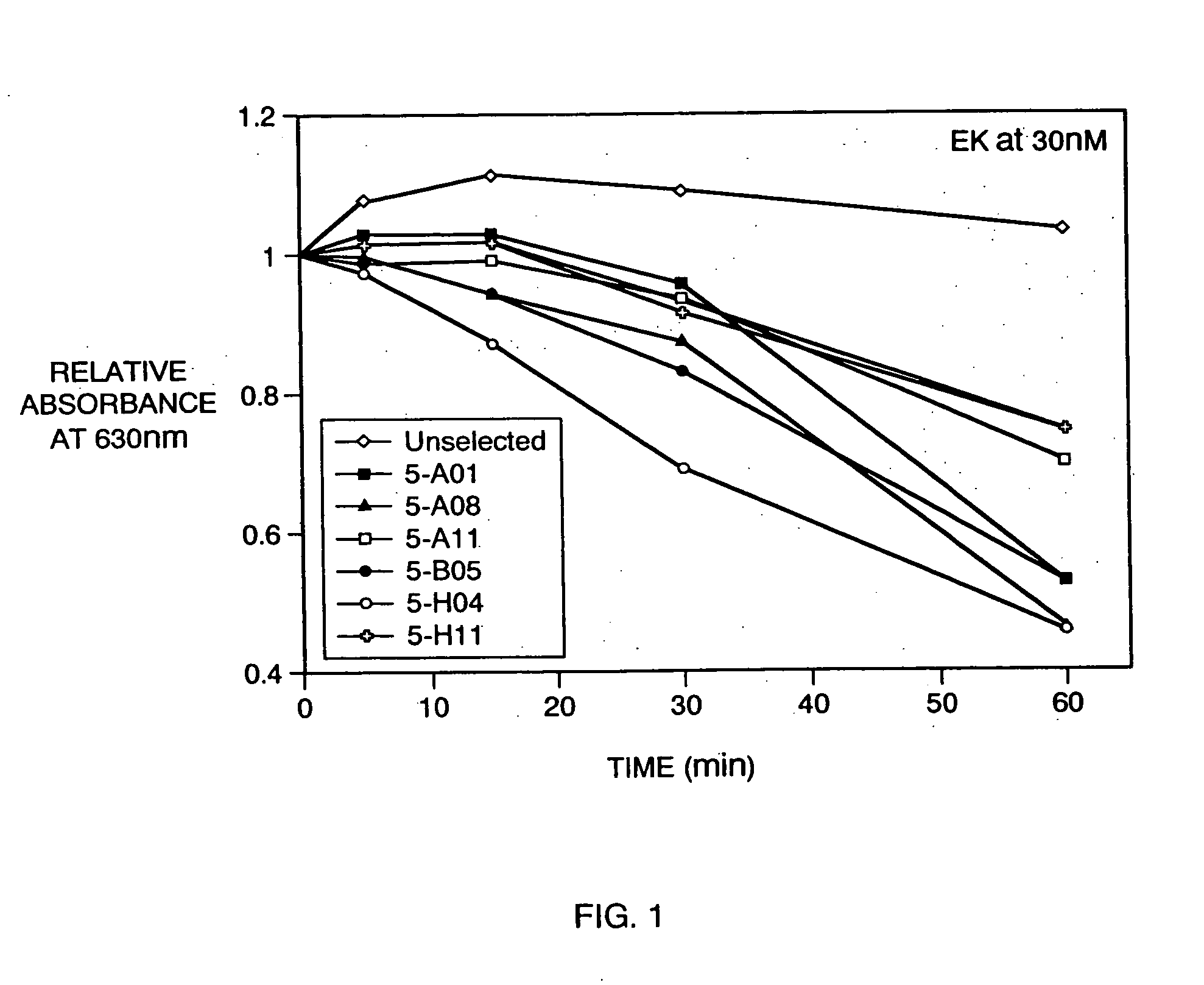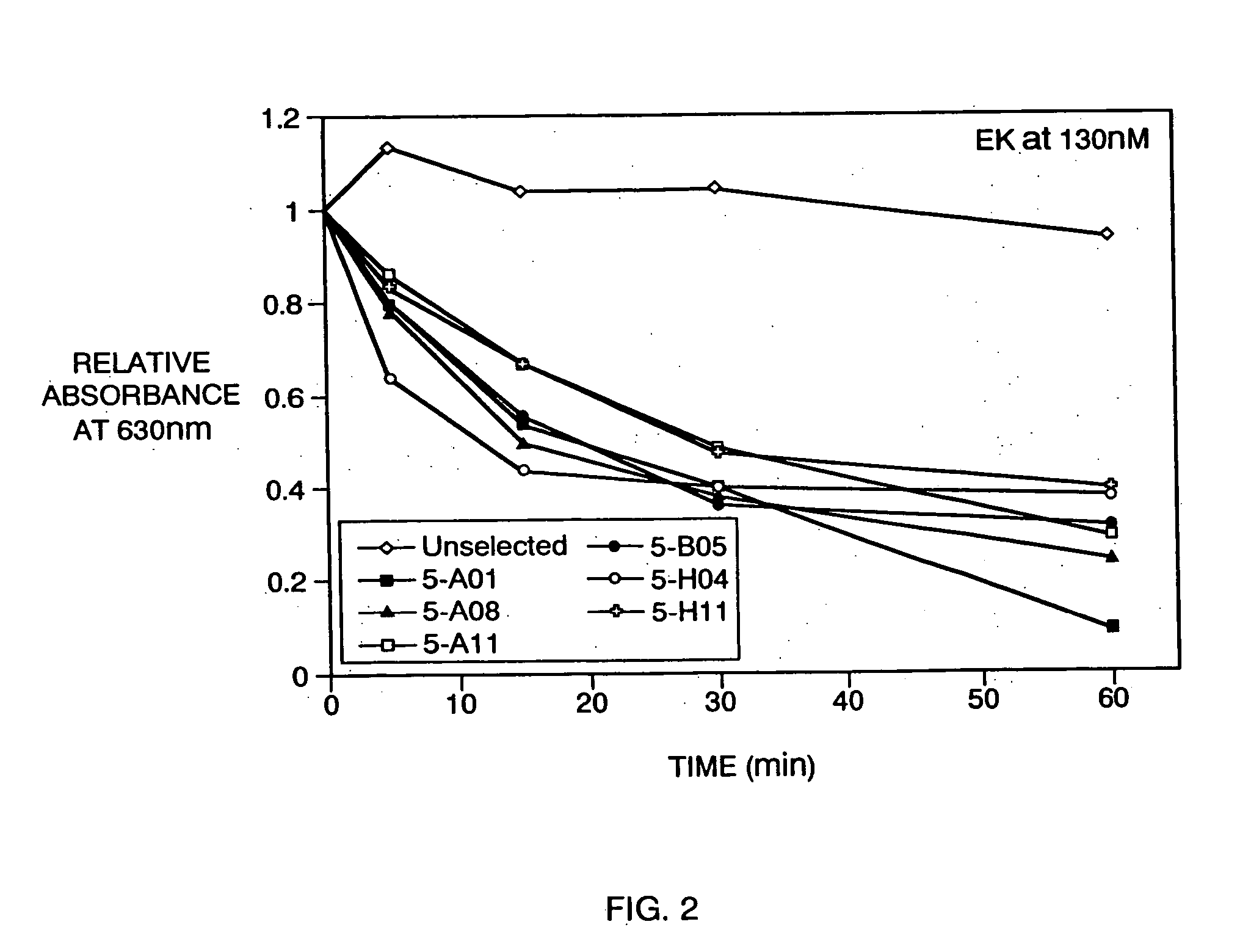Novel enterokinase cleavage sequences
a technology of enterokinase and sequence, applied in the field of new enterokinase recognition sequence, can solve the problems of enzyme/substrat kinetics, specificity and rate, and hinder the application of potential applications, and achieve the effects of facilitating peptide secretion, reducing the number of uv absorbers, and improving the uv absorption ra
- Summary
- Abstract
- Description
- Claims
- Application Information
AI Technical Summary
Benefits of technology
Problems solved by technology
Method used
Image
Examples
examples
Construction and Screening of Phage Display Library for EK Cleavage Sequences (i) Construction of Substrate Phage Library
[0152] A phage display library was designed for the display of an exogenous polyeptide at the N-terminus of M13 phage gene III protein. The exogenous polyeptide was an 86-mer fusion protein having tandem ligand recognition sequences, a variegated segment of thirteen amino acids serving as a template for potential EK recognition sequences, a factor Xa cleavage site,. segments linking the foregoing domains and linking to the N-terminus of gene III protein. The sequence of the exogenous display polypeptide was as follows:
[0153] AEWHPQFSSPSASRPSEGPCHPQFPRCYIENLDEFRPGGSGGXXXXXXXXXXXXXGAQS DGGGSTEHAEGGSADPSYIEGRIVGSA-(gene III protein N-terminus) (SEQ ID. NO:9), wherein any amino acid residue except cysteine was permitted at each X position. The underscored segments denote, moving from N-terminal to C-terminal, a linear streptavidin binding sequence, a constrained st...
PUM
| Property | Measurement | Unit |
|---|---|---|
| molecular weight | aaaaa | aaaaa |
| molecular weight | aaaaa | aaaaa |
| MW | aaaaa | aaaaa |
Abstract
Description
Claims
Application Information
 Login to View More
Login to View More - R&D
- Intellectual Property
- Life Sciences
- Materials
- Tech Scout
- Unparalleled Data Quality
- Higher Quality Content
- 60% Fewer Hallucinations
Browse by: Latest US Patents, China's latest patents, Technical Efficacy Thesaurus, Application Domain, Technology Topic, Popular Technical Reports.
© 2025 PatSnap. All rights reserved.Legal|Privacy policy|Modern Slavery Act Transparency Statement|Sitemap|About US| Contact US: help@patsnap.com


